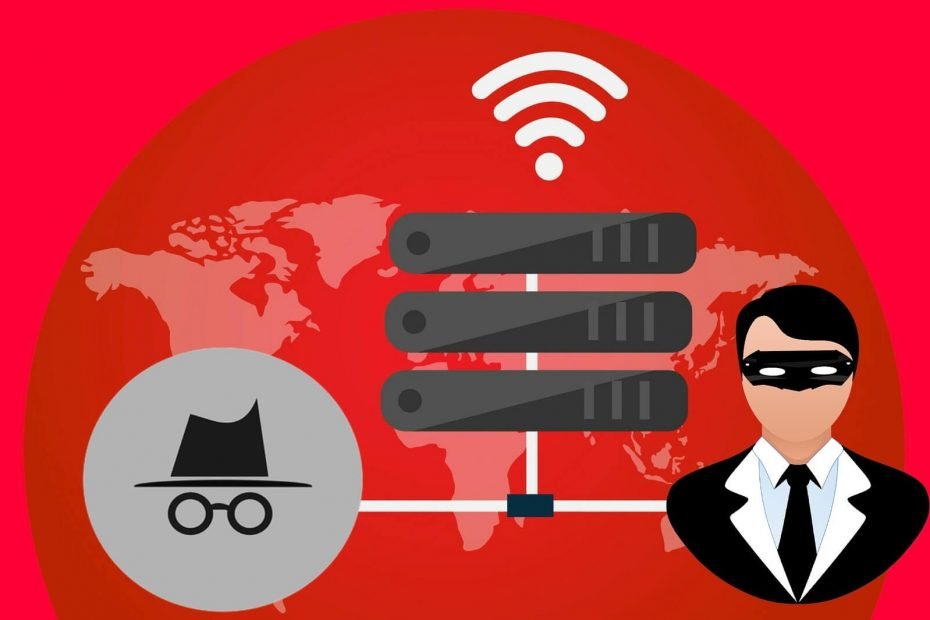Many people have the impression that Google Chrome’s Incognito mode grants the privacy they need to browse the Internet safely. Unfortunately, that’s not the case at all. In this post, I’ll tackle what Incognito can and can’t do when it comes to protecting your privacy online.
What is Google Incognito mode?
 Incognito is the name of Google Chrome’s private browsing mode. It is a tool you can use to hide your browsing information whenever you’re using a public computer, or sharing a common device with other users (like family members, co-workers, or friends).
Incognito is the name of Google Chrome’s private browsing mode. It is a tool you can use to hide your browsing information whenever you’re using a public computer, or sharing a common device with other users (like family members, co-workers, or friends).
Under the Incognito mode, Chrome will:
- Not save browsing history. Usually, when you surf the Internet with Chrome, this browser stores all the websites you visit in a list. Chrome also saves temporary Internet files, searches, login credentials, and personal details (like your name, address, or phone number). Turning Incognito mode stops Chrome from doing these things.
- Delete cookies after a closed session. A cookie is a small package of information placed by a website in your browser. If you have enabled Incognito, cookies won’t be stored on your browser, and websites who own those cookies have one less way of tracking your browsing activities.
By enabling Chrome’s Incognito mode, you remove any trace of your online activities that can be viewed through your browser itself, meaning you’re protected locally on your device from anyone who may look.
https://twitter.com/NotTendai/status/991340288273723393
Other private browsing modes
Other popular browsers have their versions of private browsing mode as well:
- Mozilla Firefox has Private Browsing
- Microsoft Edge has InPrivate Browsing;
- Safari has Private Window.
Opera and IE9 have theirs too. Like Chrome’s Incognito, all these private modes tell the browser not to store cookies and your browsing history.
Incognito and private browsing modes are not private enough
“Incognito” literally means “with one’s identity concealed.” Is Google Incognito really private though? While going Incognito is one of many ways to protect privacy, the method is not anywhere near 100% private.
For us to understand the limitations of private browsing modes like Incognito, it’s crucial that we differentiate local and online privacies.
Local privacy covers what other people can see on your device; this is what you can control with private browsing modes like Incognito. On the other hand, your online privacy won’t be completely covered by private browsing modes. If you want to keep your online privacy intact, you will need more than just a browser option.
#TuesdayTip: If it's on the internet, it isn't private. ? pic.twitter.com/dc7Fnhuzfz
— Social Media 101 (@Social101SA) May 5, 2015
Private browsing modes only affect browsers
Private browsing modes are designed only to prevent your browser from recording your browsing history and hide that information from people whom you share a common device. Incognito, and other private modes, can’t prevent your OS, router, or the websites themselves from recording pieces of evidence of your visit.
Worse, even under private mode, your ISP, the network administrator at your office or school, the government, or any third party can still collect your browsing data. Check the image below; when you switch to Incognito, Chrome notifies you about this information:
Firefox also issues the same warning:
The same thing happens with Edge, IE9, and other browsers.
How can third parties do this? They can track your IP address. Unlike cookies and other identifiers, IP addresses are not stored in browsers. They will still be visible, even if you’re using Incognito mode.
Using a VPN for a truly private online experience
Incognito and other private browsing modes can only do so much to protect your local privacy. They only hide your browsing history and delete those tracking cookies. If you need something that will hide your online presence as well as protect you against malicious attacks, you need a tool that’s stronger than your browser. You need a Virtual Private Network (
A
But don’t go with just any
[affilioProvider max=”2″ top=”n” cat=’nologs’]
Google’s Incognito mode doesn’t secure traffic
Incognito and other private browsing modes don’t secure traffic against hackers, man-in-the-middle (MITM) attacks, and other vulnerabilities you may encounter online. The best way to protect yourself is by putting your traffic through a secure, encrypted tunnel. In a worst-case scenario where attackers have accessed your network and got hold of your data, they still can’t decode your data because it is encrypted.


